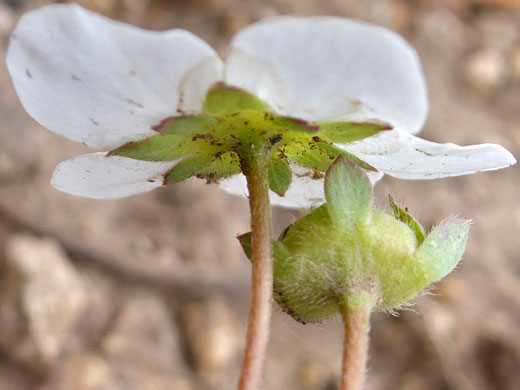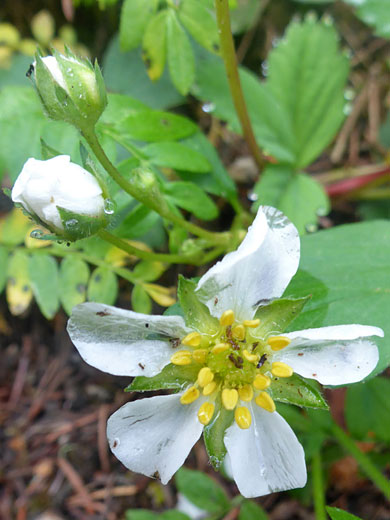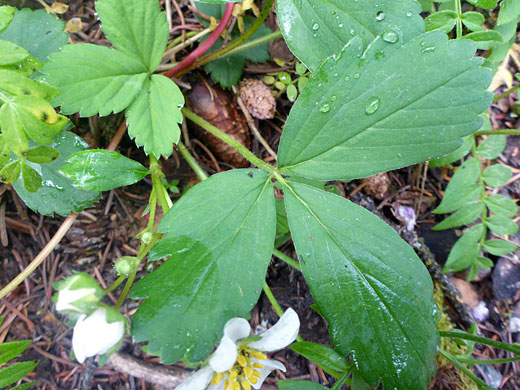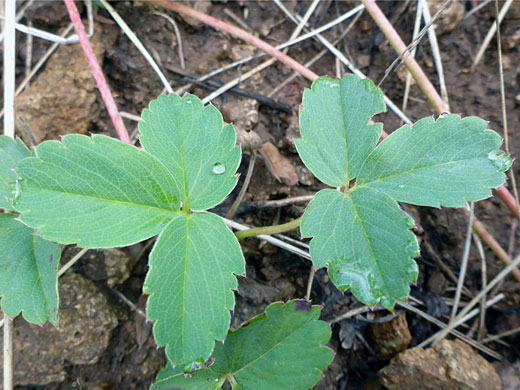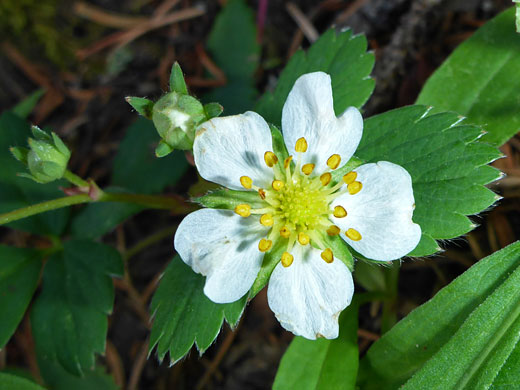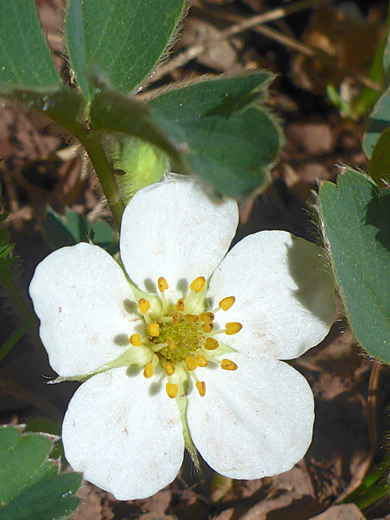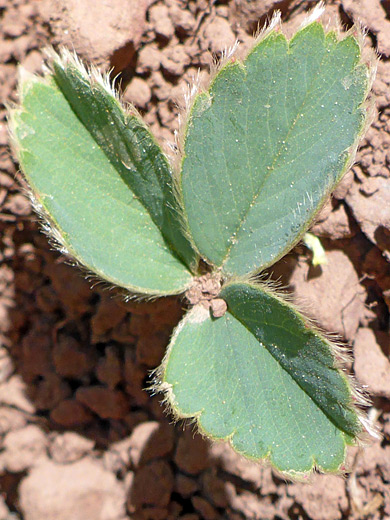
Rounded white petals above green sepals - fragaria virginiana, Porphyry Basin Trail, San Juan Mountains, Colorado
Common names:
Virginia strawberry, mountain strawberry
Family:
Scientific name:
Fragaria virginiana
Main flower color:
Range:
All the western states; mostly absent from Nevada and the Great Plains
Height:
Up to 5 inches
Habitat:
Meadows, roadsides, fields, open woodland; from sea level to 12,000 feet
Leaves:
Divided into 3 ovate, toothed leaflets, up to 2.5 inches long
Season:
May to August
Flowers of fragaria virginiana, the most widespread of the three US species of strawberry, are formed of five unlobed bractlets and five similar-looking sepals, all moderately covered by white hairs, above which are five larger white petals, obovate or nearly round in shape. At the center are up to 30 short yellow stamens around a group of pistils. Flowers are a little less than one inch in diameter. Petals may be slightly overlapping, or just separate.
Leaves are attached by stalks of up to 4 inches long, and are divided into three leaflets; the terminal leaflet itself has a short stalk. Leaflets are bright green or bluish green, with a yellowish midvein and branched side veins. Leaflets are lined with large, regular but relatively shallow teeth, and the terminal tooth is smaller than those adjacent. This distinguishes the species from the similar fragaria vesca, for which the terminal tooth is usually larger than those adjacent. Teeth number between 7 and 11, generally all above the middle. Leaflets are hairless above, hairy below.
Four subspecies (glauca, grayana, platypetala, virginiana) are differentiated by characteristics of the hairs and of the leaves.
Leaves are attached by stalks of up to 4 inches long, and are divided into three leaflets; the terminal leaflet itself has a short stalk. Leaflets are bright green or bluish green, with a yellowish midvein and branched side veins. Leaflets are lined with large, regular but relatively shallow teeth, and the terminal tooth is smaller than those adjacent. This distinguishes the species from the similar fragaria vesca, for which the terminal tooth is usually larger than those adjacent. Teeth number between 7 and 11, generally all above the middle. Leaflets are hairless above, hairy below.
Four subspecies (glauca, grayana, platypetala, virginiana) are differentiated by characteristics of the hairs and of the leaves.
All Contents © Copyright The American Southwest | Comments and Questions | Contribute | Site Map



